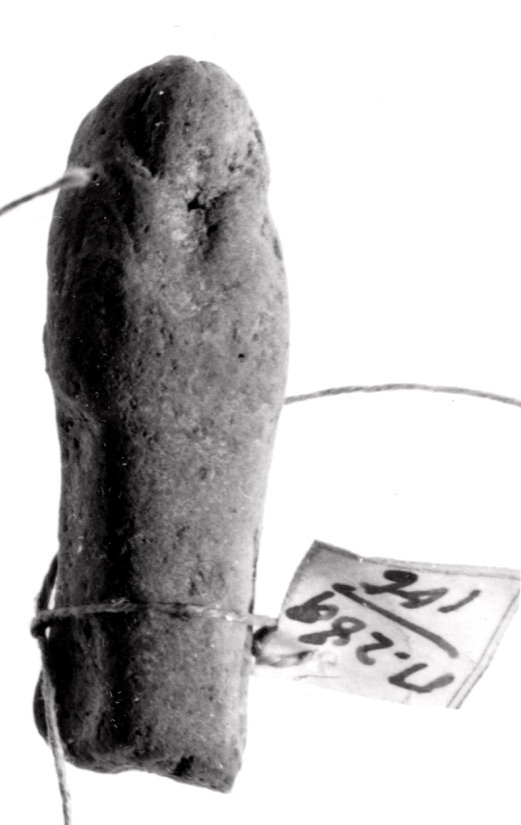
Ushabti
Egyptian Art
| Date | 1185–945 BC |
|---|---|
| Object type | religious or cult object |
| Medium, technique | terracotta, moulded |
| Dimensions | 8.4 × 6.5 × 3 cm |
| Inventory number | 50.143 |
| Collection | Egyptian Art |
| On view | This artwork is not on display |
This object exemplifies a group of ancient Egyptian statuettes, made of baked clay, less frequently limestone, each depicting a female figure lying on a bed or couch, either as a stand-alone figure or often accompanied by a small-scale figure of a child, sometimes bordered by images of vessels or cosmetic tools. This type seems to have been introduced in the New Kingdom, during the late Eighteenth Dynasty and continued to be used until the Late Period.
The fragment once belonged to a rectangular terracotta plaque made in a single-piece, open mould. In its full, intact state, it depicted a woman lying on a bed, accompanied by a small figure of a child on her right. Both are naked with slender bodies and disproportionately elongated limbs. Whereas several comparable pieces depict the child with an upraised left hand, gently touching the fingers of his mother, in this particular case there is no contact between the figures. Despite its fragmentary state of preservation, the statuette can still be considered one of the more elaborated, better-quality specimens of its type. The ends and the sides of the bed are characteristically rounded; the footboard is only indicated by an upward curve, now partly broken off. The corner protrusions of the back forming the legs of the bed have also been broken off. The terracotta plaque was coated with a post-firing white plaster cover, then a characteristic red wash which is best preserved on the body surfaces. Traces of faint black paint can also be detected in the mother figure’s pubic triangle.
Prevailing scholarly theories tend to label these objects as fertility figurines that may have been deposited as votive offerings in tombs, domestic shrines, and temples of the goddesses Hathor, Mut or Anuket to promote successful conception and grant divine blessings in the perilous time of early childhood. Owing to their high popularity, they were fashioned in large quantities in settlements and ceramic workshops belonging to temples and cult centres.
This record is subject to revision due to ongoing research.